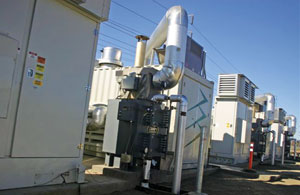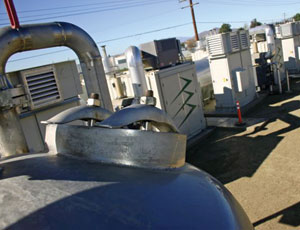

“States are doing fair, not good,” at developing timetables and numeric limits to reduce nitrogen, acknowledges EPA’s Wheeler. “I really think some of the states are waiting for EPA to get more involved and develop some criteria,” he says. An EPA inspector general’s report released in August recommended EPA take a stronger stance and identify “priority” states where efforts could be concentrated and where numeric limits could be established. Agency water officials disagree with some of the recommendations but agree the agency should create more accountability for meeting milestones for adopting nutrient water-quality standards where required. EPA has 90 days to formally respond to the report.
Agency officials say they are keeping a watchful eye on what happens with the Chesapeake Bay and efforts to develop a total maximum daily load (TMDL) for the Chesapeake Bay watershed. Later this fall, an interagency task force, led by EPA and established by an executive order from President Barack Obama, plans to issue a strategy for reducing pollution in the bay. It will include the first steps toward developing a TMDL that holds states accountable for their efforts to reduce nutrients. “If it works well in the bay, you may see [a similar effort] in the Puget Sound, or other critical water bodies might take a similar type of approach,” Wheeler says.
Marie Burbano, principal in CDM’s Los Angeles office, says typical effluent limits are 8 mg/liter for nitrogen and 1 mg/liter for phosphorus, but other parts of the country—particularly the Northeast, mid-Atlantic and some Midwest states—are pushing limits much lower, to 3 mg/liter for nitrogen and 0.05 mg/liter for phosphorus. “The regulations that are getting more stringent in terms of nutrients are definitely going to be driving a lot of the technology and a lot of the projects coming up in the future,” she says.
But, she adds, extremely low levels can have diminishing returns. “The problem with getting to these very low limits is you are using a lot of chemicals,” she notes. “There’s a question as to the environmental impact of generating all those chemicals versus the improvements you get from going from 0.2 mg/liter to 0.05 mg/liter.”
Technologies
A number of proprietary, newer technologies are being implemented, although many are of a smaller scale, on projects to reduce nitrogen and phosphorus levels to very low numbers. Many firms are using one of three types of the newest iterations of ballasted flocculation technology, which have been popular in northern Europe but have not been widely used in the U.S. until recently.
Used after effluent has passed through secondary treatment, the technology adds flocculation-aiding chemicals such as aluminum sulfate in ballasted flocculation basins to create conditions in which particles become heavier or larger, bind together, and then settle. The particles then leave the treatment stream in the tertiary sludge, and the ballast is recovered using a filter, hydraulic system or, in the case of magnetically enhanced coagulation (CoMag), a magnetic drum. Three of the flocculation systems now being used are CoMag, which uses magnetite as the ballast; Actiflo, which uses sand or grit; and Densadeg, which uses sludge itself.
Sudhir Murthy, research and laboratory manager for the District of Columbia Water and Sewer Authority (WASA), says although flocculation has been used in wastewater treatment for more than 50 years, what’s new are the technologies that “make the particles either bigger or heavier than the older processes.” Then, by creating conditions to remove the particles more efficiently, “you’re able to process a lot more water in a smaller container,” bringing down the cost to treat the water compared to conventional methods.
CDM used CoMag to successfully reduce phosphorus levels in effluent to 0.05 mg/liter on an average monthly basis in the first full-scale application of the technology, a project for the town of Concord, Mass. In 2004, the Massachusetts Dept. of Environmental Protection established a TMDL that includes phosphorus limits of 0.1 mg/l or lower for all major plants that discharge into the Assabet River. CDM installed a full-scale 1.2-million-gallon-per-day CoMag system that includes two trains of reaction tanks, followed by two 10-sq-ft clarifiers and a final polishing magnet to remove any remaining pin flocs to achieve nutrient-removal goals.
Brown and Caldwell designed a CoMag system for a $9.19-million upgrade to the 1.45-mgd Maynard wastewater treatment plant in Maynard, Mass. The approximately $3-million system uses a process similar to that used at Concord but forgoes using the polishing magnet at the end. “We elected not to use that because we are confident that our design without it is able to meet the current limits,” says Jonathan Keaney, senior engineer in Brown and Caldwell’s Boston office. Keaney says the CoMag system should achieve phosphorus reductions of 0.05 mg/l to 0.07 mg/l. Construction begins this fall.
Fatal Attraction
Another process, called Integrated-Fixed Film in Activated Sludge (IFAS), also reduces nutrient-levels. Media, whether fixed or moving, are placed within aeration tanks of the activated-sludge system. Organisms attach to the media—which often look like macaroni wagon wheels—and are retained within the reactor using screens. The process “allows you to have a higher concentration of microorganisms per unit volume,” says Malcolm Pirnie’s Husband. “It allows you to do more work in less space.”
Malcolm Pirnie has designed an IFAS system as part of a retrofit at the 27-mgd Proctor Creek wastewater treatment plant near Richmond, Va. Construction begins in November, with an expected completion date of January 2013. Richmond-based Mid Eastern Builders is prime contractor.
The total project cost, which also includes a new influent pump station and filters, is $80.6 million. The plant must produce effluent with a total concentration of 5 mg/l for nitrogen and 0.05 mg/l for phosphorus. Malcolm Pirnie also is the engineer for an IFAS system at an upgrade at the nearby 10-mgd Falling Creek wastewater treatment plant. That project, expected to be completed in January 2011, has a price tag of $20.1 million. Husband notes that Richmond projects are retrofits, not expansions. “We’re not increasing any of the tank volumes; we’re just adjusting what happens in individual parts of the tank to achieve new nitrogen limits for the facility,” he says.
HDR also has completed a full-scale IFAS installation as part of a 4.2-mgd plant retrofit in Coeur d’Alene, Idaho. Unlike in Richmond, the Idaho project used fixed film on a frame to attract microorganisms. “It looks different than the macaroni wheels, but it’s the same concept, where you’re getting attached growth bacteria,” HDR’s Clark says. Recently completed as part of a multiphase nutrient-removal program, the $500,000 project involved the installation of 26,940 sq ft of pre-purchased fixed media to add approximately 130 lb a day of ammonia-nitrogen removal capacity.
New Membranes
Wastewater engineers also report seeing an increasing number of projects that use membrane bioreactors (MBRs). With MBRs, membrane modules—or cassettes—are submerged into activated sludge tanks, shortening the treatment process by combining biological treatment with solid-liquid separation.
CH2M Hill’s Daigger says MBRs are becoming more widely used because they make disinfection easier by removing more particles more efficiently. At the same time, they are becoming more affordable. “Today, because of the decline of membrane prices [as a result of] advances in membrane technology and also advances in manufacturing techniques, the [MBR] unit cost is much, much less,” he says.
Chicago-based Greeley and Hansen, is the designer, teamed with CH2M Hill, for an MBR system in a new $257-million 50-mgd wastewater treatment and reclamation plant on a 40-acre site in the city of North Las Vegas. About 1.5 mgd of treated effluent will be sent to Nellis Air Force Base for irrigation of its golf course. The remainder will be discharged into a canal that flows in the Las Vegas Wash, which eventually re-enters Lake Mead. Construction began in November 2008, and the plant is projected to go online in May 2011.
Dave Commons, North Las Vegas water reclamation facilities administrator, says very low 0.05mg/liter limits for phosphorus was a major factor in the city’s decision to use an MBR system. “To get the kind of tertiary treatment that would have been necessary with a conventional plant would have required a fairly large piece of property,” a luxury the city did not have, he says. An MBR “can remove nitrogen and phosphorus very efficiently and with a much smaller footprint.”
But MBRs are useful for water re-use efforts as well, Daigger says. Municipalities increasingly are siting treatment facilities near locations where there is a need for reclaimed water. “MBRs are more reliable in terms of performance, and they’re easier to deploy in these remote applications because they are easier to automate.”
For now, the need to comply with stricter nutrient standards is dominating much of the focus of municipal wastewater treatment facilities. Not far in the future, however, is potential regulation on endocrine disruptors and emerging contaminants. Says Brown and Caldwell’s Goehring, “The emerging contaminant area is going to be another driver for innovation of new technologies.”




Post a comment to this article
Report Abusive Comment